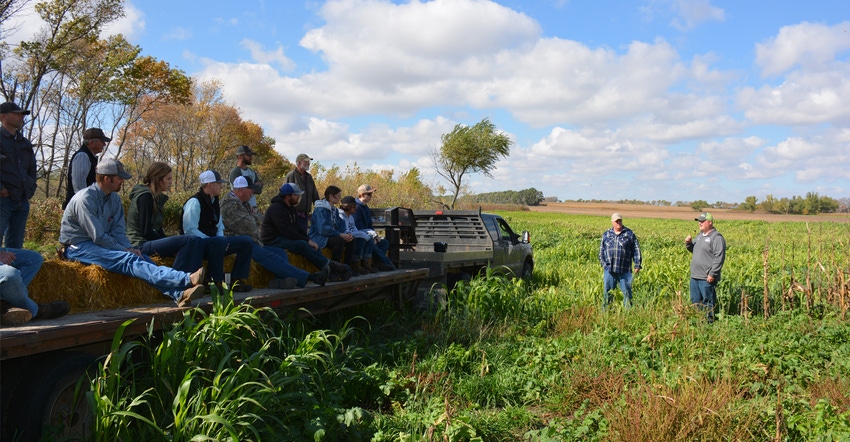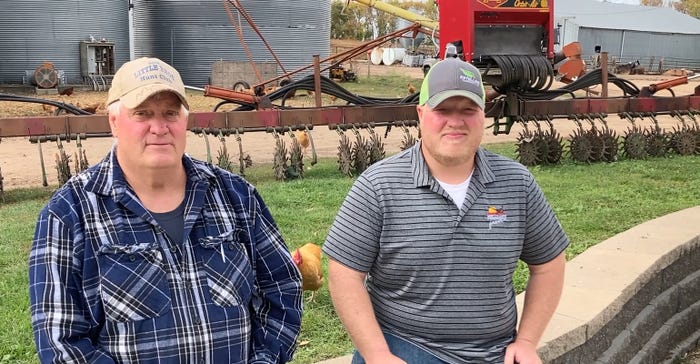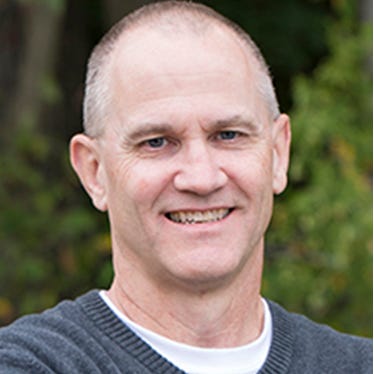
At first, Barry Little didn’t realize how much his microbiology degree would benefit him as a farmer.
“In the beginning, I didn’t think it was related at all, when I started farming in 1985,” says Barry, thinking back on the degree he received from South Dakota State University. “In today’s world, it’s pretty obvious that soil health is about the biology that’s under the surface of the soil, which is all about microbes. And that fascinates me, and I want to learn more.”
Barry and son Eli use that desire to continually learn to improve their Blioux River Ranch near Castlewood, S.D. The family operation, which includes Barry’s wife, Carolee, and their other son, Isaac, integrates the five principles of soil health every day:
keep plant residues on soil surface
minimize tillage as much as possible
have diverse crop rotation
keep plants growing year-round to feed soil
integrate livestock
Barry believes that fifth principle, integrating livestock, is often left out of the conversation of how to best reach optimum soil health. “Not many people in the Corn Belt still own a herd of cows or sheep,” he says. “You can do the other four things, and it will help [improve soil health], but adding livestock accelerates everything so much quicker.”
Not every acre of the Blioux River Ranch has cattle grazing, yet. But the Littles’ message of soil health is spreading, and when Barry started renting three quarters last year, about of third of it was grazed in that first year. “The landlord knew at the beginning that I intend to put electric fence around the whole thing, and he’s good with that,” Barry says.
Not all landlords or cash crop farmers are so welcoming to introducing livestock to their crop ground, but the Littles see it as a win-win situation for both parties. Livestock can forage the cover crops and cash crop stubble at a time when pasture forage quality can be low, and the presence of livestock increases soil biological activity.
Sheep, hogs and chickens also make up the Little operation. Ewes lamb in May, and the lambs are weaned in September. Barry says the ewes graze different crops from the cattle, eliminating any competition.
About 140 laying hens and 90 roosters can be found on the Little homestead, under the care of Isaac. Barry says it might be possible to get the poultry on the pasture by using a portable chicken coop. Hogs, which are half Berkshire genetics, were added to the farm in 2016, and the herd is building.
Diversified operation
In addition to the diversity the Littles have on the livestock side, they have more diversity on the crop side. In addition to the corn, soybeans, wheat and oats, they grow a variety of cover crops. Millet, cow peas, turnips, radishes, flax, sunflowers, buckwheat, African cabbage, crimson clover, sorghum and sudangrass make up their cover crop mix. “We do about a half-pound of each of those, for about $20 per acre,” Eli says. “Oats is the filler, and I think there’s about 15 pounds of oats and everything else is either a pound or a half-pound.”
Barry shares an interesting tidbit of cover crop benefits that short-stature plants release more root exudates than a tall crop. “So if you’ve planted a cover crop into corn and that corn is 8 feet tall, it’s got some root exudates,” he says. “But that cover crop that’s maybe 6 inches tall is really going to town, and that’s supplying stuff for the bugs, which are supplying stuff for the corn. It’s going to help your yield.”
Progression to no-till
Barry has learned along the way what works best for his cropland and for his family, and he hasn’t been afraid to try things even though those practices may not follow conventional thinking.
That thinking goes back to when his dad discarded the moldboard plow, favoring a chisel plow. “So he was a conservation farmer,” Barry says. “He tried to be an organic farmer without knowing anything about what organic farming meant.”
In 1985 when Barry started farming with his brother, he says they were “trying stuff that no one else was,” including ridge till. “We got to the point where we were trying to cultivate almost 2,000 acres three times in a summer,” he recalls. “And there’s just no time to do that with a 12-row cultivator.”
Then they saw the light of no-till farming from the likes of Dwayne Beck, manager at the Dakota Lakes Field Station at Pierre, S.D., and Steve Kenyon, a farmer from Busby, Alberta, among others.
 ECONOMICS, NOT IDEOLOGY: Barry (left) and Eli Little made the switch to no-till farming for economic reasons, rather than the ideology. However, they are reaping the benefits of improving soil health and, as Eli sees it, keeping the farm in the family.
ECONOMICS, NOT IDEOLOGY: Barry (left) and Eli Little made the switch to no-till farming for economic reasons, rather than the ideology. However, they are reaping the benefits of improving soil health and, as Eli sees it, keeping the farm in the family.

“We did things for an economic reason, rather than an ideology,” Barry says. “If we no-till, we’re going to save some water on our poor soils, and we’d raise a better crop, and we’d allow cattle to graze the cornstalks to get some feed. No-till is a tool, not our goal.”
The Little way of farming has more benefits than simply improving soil health. As Eli sees it, if not for the current soil health practices practiced on the farm, he would probably be employed elsewhere, using his SDSU ag business degree.
“We’ve been doing these conservation practices to make the land more profitable,” Eli says. “I would say that if the whole idea of soil health hadn’t come about, or we hadn’t heard about it, there wouldn’t be room for me on the farm. I tell people it’s not a matter of if we would be conventional farmers or do soil health practices. We’d have to do soil health practices or quit farming.”
About the Author(s)
You May Also Like






